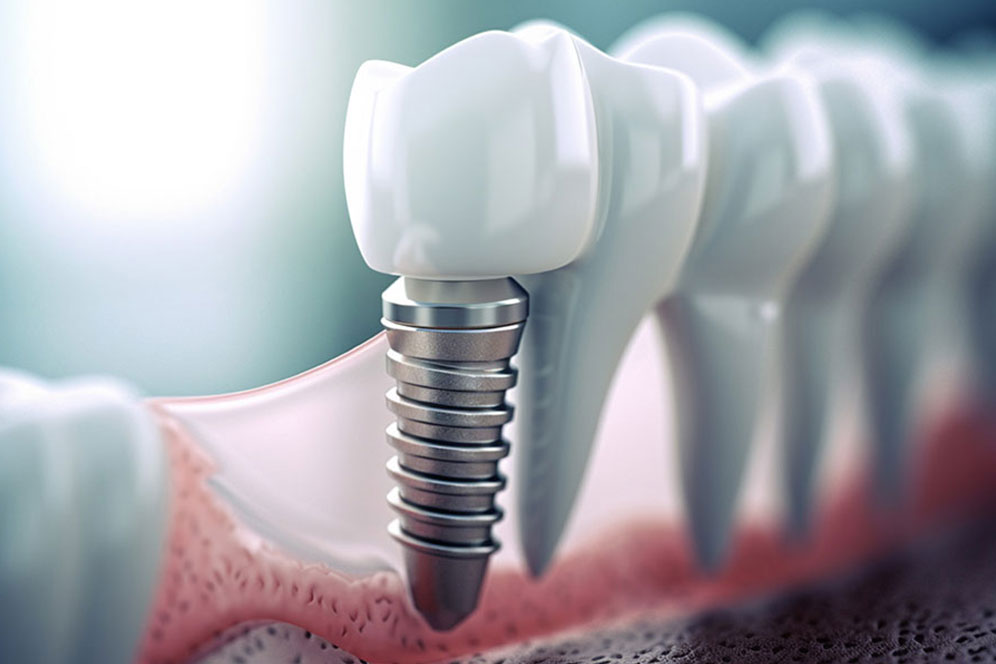Table of Contents
ToggleDental implants sit firmly at the intersection of biology and engineering, restoring confidence as well as chewing function. For anyone researching dental implants Sydney, it helps to know how the different systems work and how long they are likely to last once in place.
Endosteal (Conventional) Implants
These screws or cylinders, usually titanium grade IV or V, are placed directly into the jawbone. Once osseointegration has finished – roughly three to six months – they behave almost like the original tooth root. Long-term studies show a 10-year survival rate nudging 95 per cent, with many fixtures still trouble-free after 25 years or more when home care and professional maintenance are on point. Clinics promoting affordable dental implants Sydney often rely on this time-tested design because components are widely available and compatible across reputable brands.
Subperiosteal Implants

A custom metal framework is fitted on top of the bone but beneath the gum. This option gained traction before modern bone grafting techniques existed and is now used mainly when severe resorption rules out standard screws. Because the frame is not fully embedded, it faces greater stress from daily loading. Five-year survival hovers around 80–85 per cent. When comparing dental implants cost Sydney, expect subperiosteal work to be higher due to the bespoke laboratory stage.
Zygomatic Implants
Designed for patients with minimal upper-jaw bone, these extra-long screws anchor into the zygomatic (cheek) bone. Surgery is more complex, yet success at 12 years exceeds 90 per cent in dentists hands. Although some advertisements mention cheap dental implants, zygomatic fixtures rarely fall into that bracket because they demand hospital-grade sedation, longer theatre time and advanced training.
Mini Implants
With diameters under 3 mm, minis aim to stabilise loose full dentures or replace small incisors where bone is thin. Placement is minimally invasive; many are loaded the same day. Research suggests a five-year survival rate between 86 and 92 per cent. Their slim profile means greater risk of bending or fracture if overloaded, so they suit light-bite zones best. Online searches for the Cheapest dental implants often highlight minis, yet their indications remain limited.
All-on-4 and All-on-6 Full-Arch Bridges

These protocols use four to six strategic screws to support a fixed bridge placed within 24 hours. Tilted posterior implants dodge anatomical structures and shorten chair time. Ten-year studies point to implant survival above 94 per cent and prosthesis survival around 98 per cent. National statistics put average teeth implants cost for a full-arch solution at about half the price of segmental bridgework, since fewer fixtures anchor an entire row of teeth.
Materials Matter
Titanium remains the gold standard because it bonds predictably with bone and resists corrosion. Zirconia, a tooth-coloured ceramic, appeals to patients wary of visible metal or potential allergies. Early zirconia screws had issues with micro-cracks; newer monolithic versions show promising five-year outcomes, though long-term data beyond a decade is still thin.
Durability in Real Life
No implant, whatever the material, is indestructible. Peri-implantitis (a gum infection similar to periodontitis) can erode bone, and night-time grinding transfers heavy forces through the prosthetic crown to the fixture. Regular recall visits, radiographic reviews and scale-and-clean appointments are non-negotiable if you want the work to outlast your mortgage.
Budgeting and Value
Ask for a written estimate showing the dental implant price broken into surgical, restorative and laboratory components. Itemised quotes let you compare apples with apples and avoid nasty surprises. While chasing the lowest fee can be tempting, remember that experience, sterile protocols and genuine parts underpin longevity as surely as thread depth or alloy grade.
Well-planned implants behave much like natural teeth and, when cared for, can serve for decades. A personalised assessment, including 3-D imaging and bite analysis, will decide which system fits your bone, budget and expectations. Speak with a dentist who places implants every week, not just occasionally; their hands-on experience is the shortest route to a smile that keeps working long after the excitement of new teeth has settled.
Frequently Asked Questions
1. How long can a well-placed dental implant be expected to last?
Clinical studies show titanium fixtures integrated in healthy bone routinely function for 20 years or more, with published 10-year survival rates around 95 percent. Durability depends on proper planning, precise surgery, good bone density, and after-care. Regular hygiene visits, diligent brushing, and stopping smoking help prevent peri-implantitis, the main late complication. Many Australians still chew comfortably on implants placed during the 1990s without regular repairs.
2. What factors influence dental implants cost Sydney patients receive in quotes?
Fees vary because each implant plan is slightly different. Cone-beam CT imaging, bone grafting, dentistry experience, hospital sedation, and prosthetic materials all add line items. You may see separate charges for the titanium fixture, abutment, crown, and follow-up appointments. High-volume clinics sometimes offer package pricing, but always compare warranties, laboratory standards, and brand authenticity rather than simply choosing the lowest figure on the estimate.
3. Are affordable dental implants Sydney practices advertise still made from high-grade materials?
Reputable clinics lower prices through economies of scale, streamlined workflows, and supplier contracts rather than cutting corners on metal quality. Genuine titanium grade IV or V screws remain the norm because lesser alloys fail Australian regulatory approvals. Ask your dentist for the batch certificate and Therapeutic Goods Administration listing. Cheap deals become expensive if components fracture or are impossible to service when you move interstate.
4. Why does dental implant price differ between single-tooth, bridge, and full-arch cases?
Each scenario requires a specific number and length of screws, laboratory steps, and prosthetic materials. A single molar usually uses one fixture, one zirconia crown, and minimal surgery, while a three-unit bridge needs two implants and a larger custom framework. Full-arch restorations involve four to six implants, chairside temporary teeth, adjustment visits, so fee structures reflect extra components, surgical time, and technician expertise.


